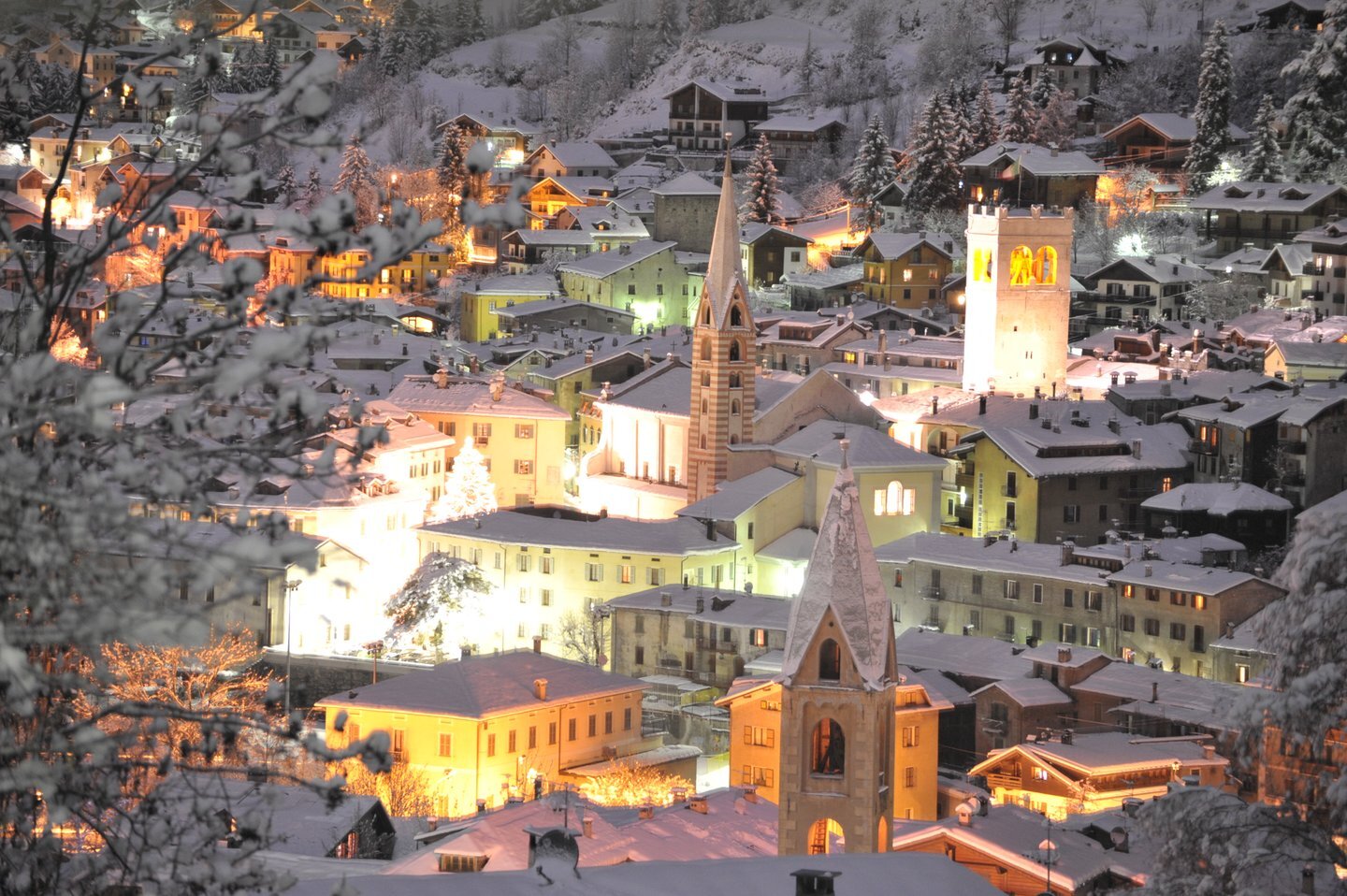Hai det
The historic centre of Bormio, one of the most beautiful Alpine villages, is a little artistic gem that’s well worth a visit – whether you’re taking a break from skiing or enjoying a relaxing day at the thermal baths.
Scattered throughout the cobbled streets of the old town are ancient churches, noble palaces, rural houses, arched doorways, frescoes, and other artistic treasures that will have you looking up in wonder. They are the tangible legacy of Bormio’s thousand-year-old history: during the Middle Ages, it was a crossroads for important trade, artistic and cultural exchanges with Northern Europe – and its historic charm is still striking today.
Bormio’s historic centre and surrounding streets are a compact treasure trove of architectural, cultural and historical gems. That’s why we highly recommend joining a guided tour led by local experts who can unveil the secrets of this ancient village. But if you're too busy carving down the Stelvio slope or soaking in the thermal waters, here are the 5 must-see sights in Bormio’s historic centre.
What to see in Bormio
The Church of the Holy Spirit – Bormio’s very own Sistine Chapel
Among Bormio’s many religious buildings, this little deconsecrated church at the entrance of Via Roma is definitely worth a visit.
The Church of the Holy Spirit dates back to before the 14th century and features a simple, rustic exterior. But step inside, and you’ll be surprised by the vibrant frescoes covering the entire apse and nave. These frescoes, painted by the Giotto school, are so rich in colour and detail that the church has earned the nickname “Bormio’s Sistine Chapel.”
The church is not always open, but it can be visited during guided tours or special events – and it's absolutely worth seeing.
The Kuèrc Square and its historic loggia
At the heart of the old town, you’ll find Piazza del Kuèrc, Bormio’s main square and a symbol of its civic history. Here stands the Kuèrc, a large stone canopy structure where justice was once administered in public.
In the same square, you can admire the Palazzo del Podestà and the Tower of the Bajona, Bormio’s civic bell tower, which still rings out during key moments in town life.
The square is also surrounded by charming cafés and local shops – a perfect spot for a relaxing break with views of the ancient buildings and the mountains beyond.
The Via Roma: a walk through timeVia Roma is Bormio’s main street and the historic artery of the town. As you walk along it, you’ll pass elegant palaces, stone houses, wooden balconies, and ancient coats of arms carved into the walls.
Shops, artisan boutiques, and traditional bakeries line the street, making it the ideal place for a stroll, a bit of shopping, or a taste of local flavours.ù
The Civic Museum and Palazzo De Simoni
For those curious to dig deeper into Bormio’s history, the Civic Museum, housed in Palazzo De Simoni, offers a fascinating collection of artefacts, artworks, traditional tools, and historical documents.
It’s a window into local life over the centuries – from agriculture and crafts to daily customs and mountain culture. A great option for a rainy day or for culture lovers.
The frescoes and coats of arms of the noble houses
Bormio’s noble families left behind impressive traces of their presence. As you wander the streets of the old town, keep an eye out for stone-carved coats of arms, sundials, frescoes, and inscriptions on the facades of many buildings.
These details tell stories of powerful lineages, alliances, and the prestige Bormio held during its heyday as an independent comunità.

